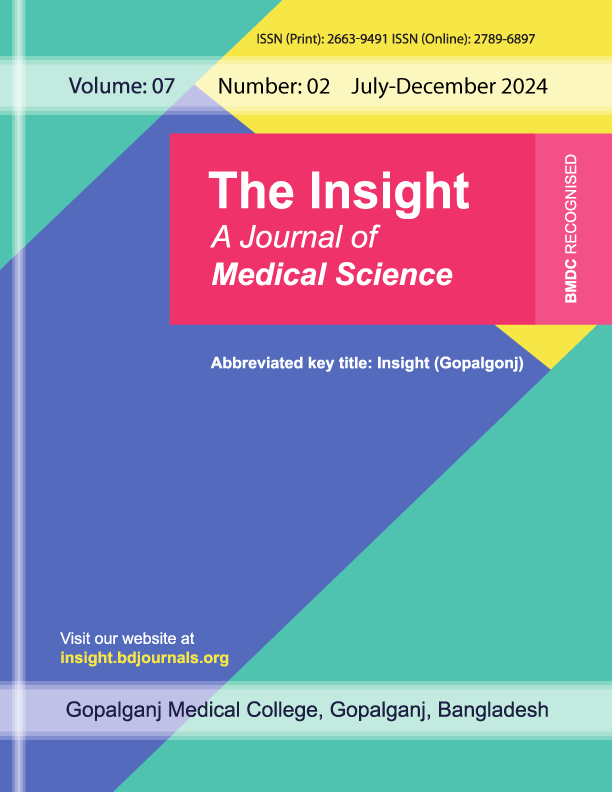Quantitative Value of Adenosine Deaminase in Exudative and Transudative Type of Pleural Effusion-50 Case Study
Published 07-07-2025
Keywords
- Pleural,
- Exudate,
- Transudate,
- Adenosine,
- Deaminase
- Tuberculosis,
- Biomarker,
- Diagnosis,
- Lymphocyte ...More
Copyright (c) 2025 The Insight

This work is licensed under a Creative Commons Attribution 4.0 International License.
How to Cite
Abstract
Background: Pleural effusion remains a diagnostic challenge, where distinguishing between transudative and exudative types is crucial. Adenosine deaminase (ADA) measurement has emerged as a cost-effective, accessible biomarker with significant diagnostic utility. The aim of the study is to evaluate the quantitative levels of ADA in pleural fluid to assess its diagnostic role in differentiating exudative from transudative effusions. Methods & Materials: A cross-sectional study was conducted among 50 patients with pleural effusion admitted to BSMMU and Dhaka Medical College Hospital from September 2011 to February 2012. Pleural fluid was analyzed for ADA and other biochemical parameters. Effusions were classified based on Light's criteria. ADA cut-off value was set at 15.3 IU/L. Statistical analyses were performed using SPSS version 11.5. Results: This study compared 43 exudative and 7 transudative pleural effusion cases. Mean age was similar (42.9 ± 2.8 vs. 40.0 ± 3.1 years, p = 0.684), with male predominance in both groups. Fever (79.1% vs. 14.3%, p = 0.002) and weight loss (76.7% vs. 28.6%, p = 0.020) were significantly more common in exudative cases. ESR was markedly higher in the exudative group (70.7 ± 4.6 vs. 27.8 ± 6.6 mm/hr, p < 0.001). Leuconychia (57.1% vs. 2.3%, p = 0.001) and oedema were more frequent in transudative cases. Other symptoms and lab parameters, including WBC count and differential, showed no significant differences. Conclusion: ADA is a valuable marker for differentiating exudative from transudative pleural effusions. Its simplicity and affordability make it an excellent diagnostic tool, especially in resource-limited settings.



